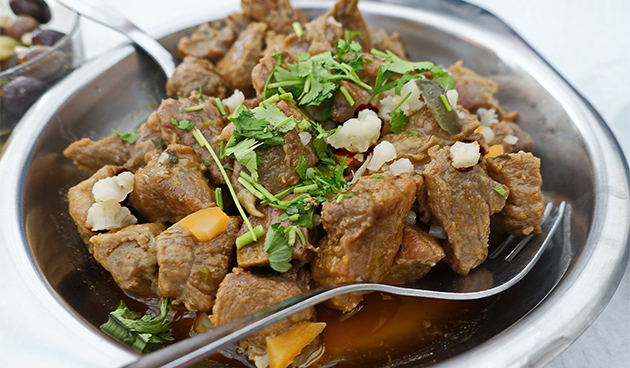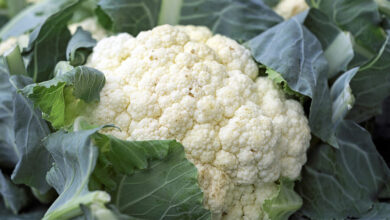Carrots: Health Benefits And Side Effects

History Of Carrots
Carrots are root vegetables that are believed to have originated in Central Asia, specifically in what is now Afghanistan. The wild ancestors of modern carrots were likely small, white, and bitter, and were primarily used for their medicinal properties rather than as a food source.
The ancient Greeks and Romans were familiar with carrots, but they were likely still small and unappetizing. It wasn’t until the Middle Ages that the carrot began to resemble the modern vegetable we know today. In Europe, the carrot was selectively bred to be sweeter and less bitter, and by the 16th century, it had become a popular food throughout the continent.
Carrots were also brought to the Americas by European settlers, and they quickly became a staple in North American cuisine. Today, carrots are widely grown and consumed throughout the world, and are used in a variety of dishes, from soups and stews to salads and side dishes. They are also valued for their nutritional content, as they are a good source of vitamins and minerals, particularly vitamin A and beta-carotene.
The Composition And Calorie Content Of Carrots
| Calories per 100 grams | 35 kcal |
| Squirrels | 1.3 g |
| Fats | 0.1 g |
| Carbohydrates | 6.9 g |
The Benefits Of Carrots
Carrots contain such useful substances as carotenoids and various trace elements. Due to their high content, carrots have the following beneficial properties:
- Removes inflammatory processes;
- Increases the body’s immunity and improves its resistance;
- Positively affects the mood of a person and his mental activity;
- Promotes the removal of excess fluid and toxins from the body;
- Improves eyesight;
- Accelerates recovery after illness;
- Stimulates a good appetite;
- Improves digestion;
- Regenerates and rejuvenates skin cells, slows down the ageing process;
- Strengthens hair and nails;
- Strengthens blood vessels and heart.
“Many nutritionists completely exclude carrots from the diet during weight loss. Someone, on the contrary, talks about its benefits and boldly adds it to the list of allowed products. Let’s figure it out.
The composition contains fibre, which has a positive effect on digestion, and also saturates us for a while. Also, carrots are rich in carotene, which has a positive effect on our skin and complexion. Antioxidants increase haemoglobin levels.
An important plus is that carrots are combined with many products, complementing them with their fresh and sweet taste and appetising crunch, which means that they can become part of a healthy snack.
But be careful with boiled carrots. Its high glycemic index causes spikes in blood sugar and only whets the appetite even more, ”shares fitness trainer, nutrition consultant Shigontseva Toma.
Side Effects Of Carrots
Carrots are generally considered safe and healthy to eat, and most people can consume them without experiencing any negative side effects. However, there are a few potential side effects to be aware of:
- Allergies: Some people may be allergic to carrots, and may experience symptoms such as itching, swelling, and difficulty breathing after consuming them. If you experience these symptoms, seek medical attention immediately.
- Digestive issues: Eating too many carrots can lead to digestive issues such as bloating, gas, and stomach cramps, particularly if you eat them raw. Cooked carrots are generally easier to digest.
- Skin discoloration: Eating large quantities of carrots over a long period of time can lead to a condition called carotenemia, in which the skin takes on a yellowish-orange hue due to an excess of beta-carotene in the bloodstream. This is not harmful and will typically resolve on its own once carrot consumption is reduced.
- Blood sugar spikes: Carrots are a relatively high-carbohydrate food and can cause blood sugar spikes in people with diabetes or insulin resistance. It’s important for people with these conditions to monitor their carbohydrate intake and to eat carrots in moderation.
Overall, carrots are a healthy and nutritious food that can be a valuable addition to a balanced diet. However, as with any food, it’s important to consume them in moderation and to be aware of any potential side effects.
The Use Of Carrots In Medicine
All parts of this vegetable are very healthy, due to which there are many traditional medicine recipes associated with it.
Due to their nutritional value and beneficial properties, carrots are most often eaten, which makes it easy to get healing elements. But there are other ways as well.
For example, a medicinal powder is prepared from carrot seeds, which helps with kidney failure and stone formation. An unusual carrot tea is prepared to support the immune system. And for diseases of the respiratory tract, carrot fresh is used.
Carrots are no less popular in cosmetology, because they are part of numerous nourishing masks for the face, body and hair.
The Use Of Carrots In Cooking
Carrots are a versatile root crop from which soups, gravies, main courses, salads, desserts and just eat.
Cream of red lentil soup

| Lentils (red) | 200 g |
| Carrot | 1 PC. |
| Bulb | 1 PC. |
| Tomato | 1 PC. (big) |
| Garlic | 2-3 cloves |
| Lemon | A couple of slices for decoration |
| Water | 4 glasses |
| Salt pepper | taste |
| Coconut oil for frying | taste |
Chop the onion and grate the carrots. The tomato should be cut into medium cubes.
Grease a frying pan with a drop of coconut oil and spread the onions. We pass it until it becomes soft and transparent. Next, add carrots, fry together with onions for about 3 minutes. After tomato and garlic. The whole mixture is stewed for 5 minutes under a lid over medium heat.
Meanwhile, wash the lentils and put them in a bowl. Then add the frying, a little salt and 4 cups of water. As it starts to boil, put on a small fire, close the lid and cook for 30 minutes.
After the soup is cooked, mix it with a blender. When serving, add lemon juice and herbs to the soup.
Beef stew like in kindergarten

| Beef (lean) | 400 g |
| Onion | medium onion |
| Carrot | half a medium carrot |
| Garlic | 1 clove |
| tomato paste | 1.5 teaspoons |
| Sour cream | 1 st. spoon |
| Water | 1.5 cups |
| Coconut oil | a couple of drops |
| Corn starch | 1 teaspoon |
| Salt pepper | taste |
| Greens for decoration |
Wash the meat well and pat dry with paper towels. Next, cut it into cubes 1×1. We rub the carrots on a medium grater, finely chop the onion.
We send vegetables to a preheated pan with a greased drop of oil. Saute until soft and add garlic. The roast is ready. Transfer it to another container. Fry the meat in the same pan until golden brown over high heat for about 2 minutes. Next, add half a glass of water and put it on a slow fire for 35 minutes.
We make gravy: pasta, sour cream and the remaining water. Mix everything and pour over the meat. Add cornstarch and stir. Let simmer for 3 minutes. Salt and pepper. Sprinkle with herbs when serving.
How To Choose And Store Carrots
Here are some tips on how to choose and store carrots:
Choosing Carrots:
- Look for carrots that are firm, smooth, and free of cracks, bruises, or soft spots.
- Choose carrots that are brightly colored, with a deep orange hue, as this indicates high levels of beta-carotene.
- Smaller carrots tend to be sweeter and more tender than larger ones.
Storing Carrots:
- Remove the leafy green tops of the carrots, as they can draw moisture and nutrients from the root.
- Store carrots in the refrigerator in a plastic bag or container, ideally in the crisper drawer.
- Make sure the carrots are dry before storing them, as moisture can lead to mold growth.
- For longer storage, you can also store carrots in a cool, dark place, such as a root cellar or a garage, as long as the temperature is above freezing and there is adequate ventilation.
When stored properly, carrots can last for several weeks in the refrigerator or several months in a root cellar or other cool storage space. It’s important to check on them periodically and discard any that show signs of spoilage, such as mold or a foul odor.




